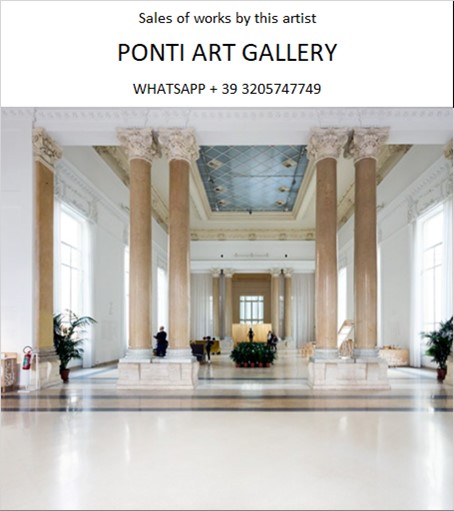Ponti Art Gallery is interested in buying and selling works
of art by this artist.

Milton Avery Biography
Milton Avery, born on March 7, 1885, in Altmar, New York, was a seminal figure in 20th-century American art, known for his luminous paintings and unique blend of figuration and abstraction. His work, characterized by simplified forms and a masterful use of color, bridged the gap between American Impressionism and Abstract Expressionism, influencing generations of artists.
Avery's early life was marked by modest beginnings. The youngest of four children in a working-class family, his father was a tanner, and the family moved to Hartford, Connecticut, in 1898. Avery's path to becoming an artist was not straightforward. He left school at the age of 16 to work in various factory jobs, including roles as an assembler, a latheman, and a mechanic. Despite these early challenges, Avery's interest in art was piqued in 1905 when he enrolled in a night class in commercial lettering at the Connecticut League of Art Students. The class was canceled, but Avery was advised to switch to life drawing, which launched his career in fine arts.
Over the years, Avery continued to work blue-collar jobs while attending part-time classes at the School of the Art Society of Hartford. His dedication to art was evident, and by 1915 he began exhibiting his work, which was often celebrated. In 1918, he transferred to the School of Art at the Society of Hartford and became a member of the Connecticut Academy of Fine Arts in 1924. A year later, he moved to New Jersey, and in 1926, he married Sally Michel, a young art student whose income as an illustrator enabled Avery to devote himself more fully to painting.
The couple moved to New York City, where Avery's exposure to European modern art and his encounters with the works of Henri Matisse and Edouard Vuillard at the Art Students League influenced his artistic development. Avery's style evolved from the Impressionist brushwork and surfaces of his early landscapes to a more abstract expressionistic approach. His work from the late 1920s and 1930s played an influential role in the development of Abstract Expressionism.
Avery's mature style is known for its radical simplification of forms and a reduction of line work to a minimum. His paintings, while always figurative, became increasingly abstract as he focused on color to convey space and depth. His late work, generally accepted as his greatest, is characterized by large, flat color areas that reveal a modernist concern for asserting the flatness of the painting's canvas support.
Despite his significant contributions to American art, Avery's work was often overshadowed by the rise of Abstract Expressionism and the popularity of American Realism. However, his influence on younger artists such as Mark Rothko, Barnett Newman, and Adolph Gottlieb was profound. Rothko, in particular, expressed great admiration for Avery's work, noting the immediate conviction of greatness upon encountering his paintings.
Avery's career was marked by several exhibitions, including his first one-man show in New York City in 1928 and a major retrospective at the Whitney Museum of American Art in 1982. His work is represented in major museums and private collections worldwide, including the Art Institute of Chicago, the Metropolitan Museum of Art, and the Museum of Modern Art.
Avery's dedication to his art was unwavering, even in the face of health challenges. After suffering a heart attack in 1949, he began experimenting with monotypes, which influenced his painting style. He continued to paint until his death on January 3, 1965, in New York City, leaving behind a legacy that continues to inspire and influence artists today.
Milton Avery's singular approach to painting, marked by a relentless pursuit of his personal aesthetic vision, has earned him a place as one of the most important painters in American art history. His work, with its distinctive color harmonies and subtle simplicity, paved the way for later generations of American colorists and remains a testament to the power of individual expression in art.
Milton Avery Quotes and Sales
of Works
Ponti Art Gallery selects and deals with paintings by the
artist. Upon request, we provide free estimates and
evaluations, communicate prices, quotations, and current
market values.
If you are interested in BUYING or SELLING works by the
artist, contact us immediately.
If you wish to sell or receive an evaluation of the
works:
Send us a frontal photo of the painting, one of the back,
and one of the signature. Also, indicate the dimensions of
the work. Inform us about the purchase origin of the work
and any kind of available documentation (purchase
receipts, certificates of authenticity, publications). One
of our operators will respond to you on the same day. We
guarantee maximum confidentiality and extreme
professionalism.
If you wish to purchase works by the painter: Contact us
and let us know your request. We will inform you about the
available works. We also offer the possibility to
subscribe to our NEWSLETTER, through which you will be
informed at the beginning of each month about the latest
acquisitions of the art gallery.
You can send us pictures of the work:
